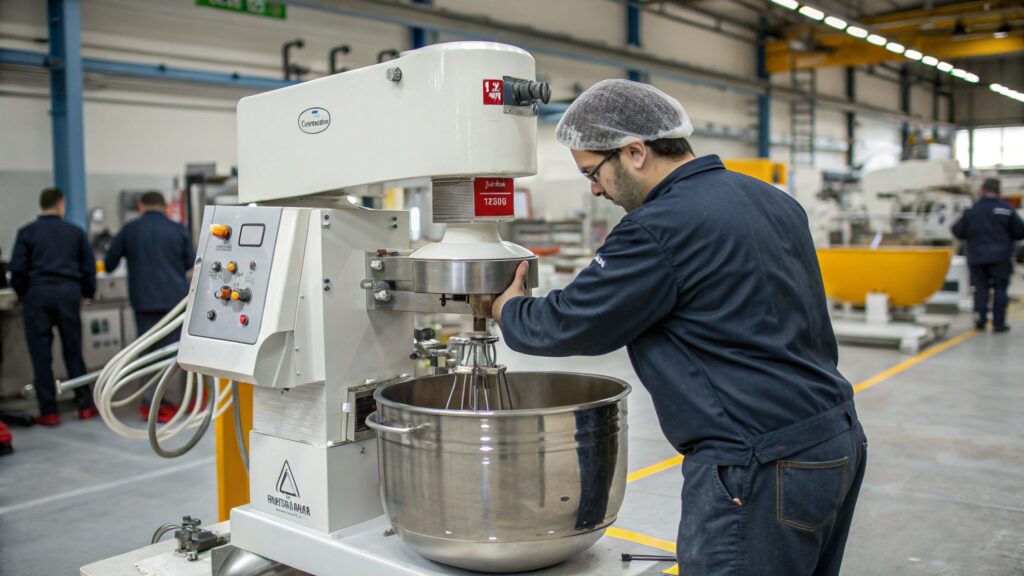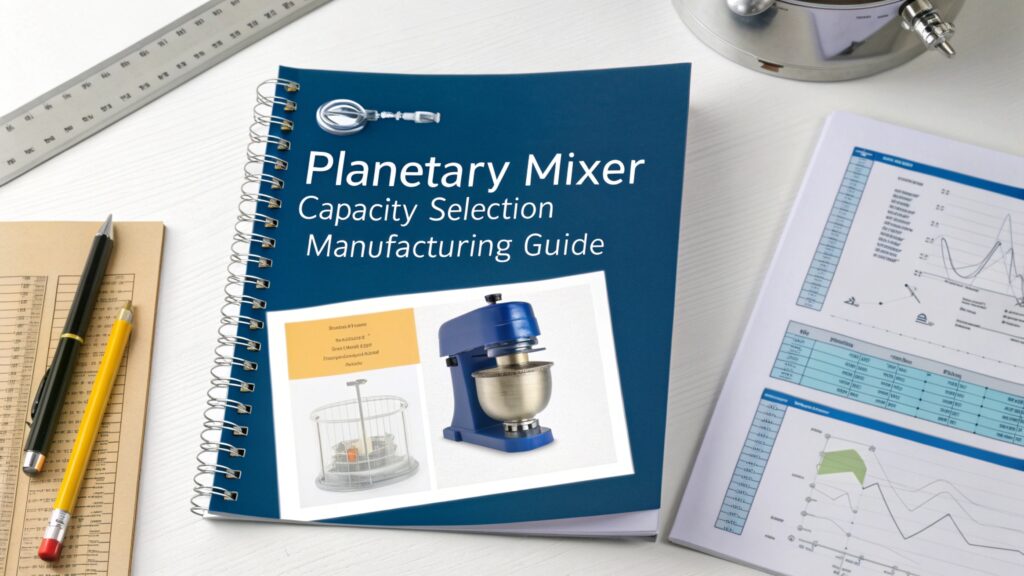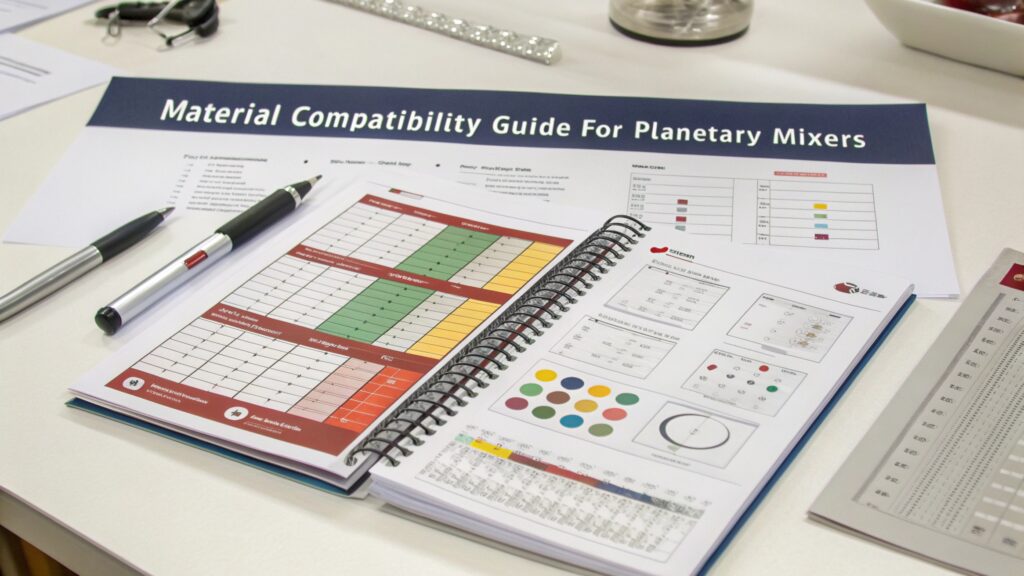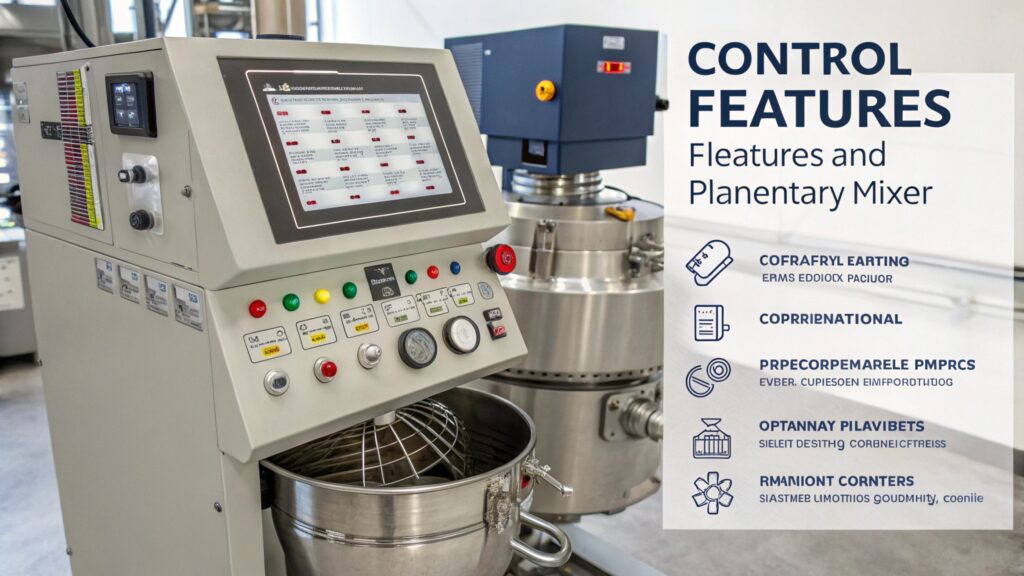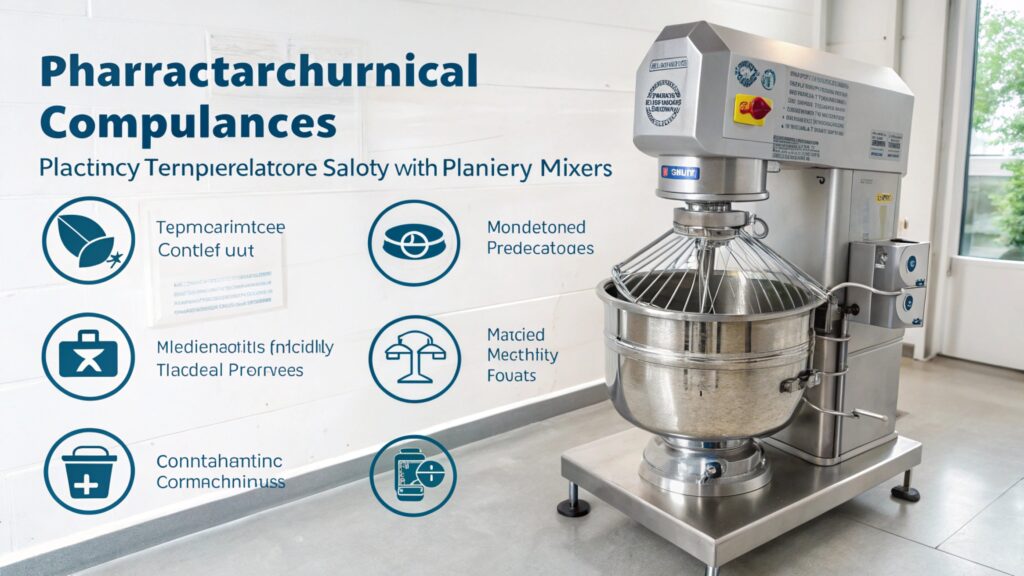Selecting the wrong planetary mixer can lead to inconsistent product quality, regulatory compliance issues, and costly production delays.
Choose a planetary mixer based on your batch size requirements, material compatibility needs, mixing mechanism preferences, and regulatory compliance standards for optimal manufacturing performance.
I’ve helped hundreds of manufacturers select the right mixing equipment over my decade at MIXERSTAR. The wrong choice often costs companies more than just money – it can derail entire product launches and damage brand reputation.
What Capacity Considerations Matter Most When Selecting Your Planetary Mixer?
Your production volume and future growth plans determine the mixer capacity that will serve your business best over time.
Match your planetary mixer capacity to current batch sizes while allowing 20-30% headroom for future expansion and varying production demands.
Last month, a battery manufacturer contacted me about upgrading from their 20L mixer. Their production had grown 300% in two years, but they kept using the same small equipment. This created bottlenecks that delayed customer orders by weeks.
Capacity planning requires careful analysis of your current and projected needs. Small-scale planetary mixers work well for R&D and pilot production, typically ranging from 1L to 5L. These units allow testing formulations before scaling up to production volumes.
Medium-scale planetary mixers handle most commercial production requirements, with capacities from 15L to 30L. These mixers balance flexibility with productivity. They can handle different batch sizes without compromising mixing quality.
| Capacity Range | Best Applications | Typical Industries |
|---|---|---|
| 1L-5L | R&D, formulation testing | Pharmaceuticals, cosmetics |
| 15L-30L | Small to medium production | Food processing, adhesives |
| 60L-300L | Large-scale manufacturing | Battery materials, chemicals |
Large industrial mixers serve high-volume production needs, with capacities up to 300L or more. These systems require significant floor space and infrastructure planning. However, they deliver the throughput needed for mass production.
Consider your facility constraints when selecting capacity. Larger mixers need more headroom for loading and maintenance access. They also require stronger foundations to handle the increased weight and vibration loads during operation.
Future expansion plans should influence your capacity decision. It’s often more cost-effective to purchase a slightly larger mixer initially rather than upgrading equipment as production grows. However, oversized equipment can create mixing inefficiencies with small batches.
How Do Material Compatibility Requirements Affect Your Planetary Mixer Choice?
The materials and chemicals you process determine the construction materials and design features your mixer must have to ensure product quality and safety.
Select planetary mixer construction materials that resist corrosion from your specific chemicals while meeting industry cleanliness and contamination prevention standards.
I learned this lesson early in my career when a pharmaceutical client experienced contamination issues. Their mixer had carbon steel components that corroded when processing acidic compounds. The resulting metal particles contaminated three production batches worth $2 million.
Stainless steel 316L[^1] provides excellent corrosion resistance for most pharmaceutical and food applications. This grade offers superior performance compared to 304 stainless steel, especially with chloride-containing materials. The low carbon content prevents carbide precipitation that could create corrosion sites.
Surface finish requirements[^2] vary by industry. Pharmaceutical applications often require electropolished surfaces with Ra values below 0.5 microns. This smooth finish prevents particle adhesion and bacterial growth. Food processing may accept slightly rougher finishes, while chemical processing might need specialized coatings.
| Material | Corrosion Resistance | Typical Applications |
|---|---|---|
| SS 316L | Excellent | Pharmaceuticals, food |
| Hastelloy | Superior | Aggressive chemicals |
| PTFE coating | Chemical inert | Specialty pharmaceuticals |
| Ceramic coating | Abrasion resistant | Harsh environments |
Gasket and seal materials require equal attention. EPDM rubber works well for many applications, but aggressive solvents might require PTFE or Viton seals. The wrong seal material can cause swelling, hardening, or chemical breakdown that contaminates your product.
Temperature compatibility affects material selection. Some plastics and elastomers degrade at elevated temperatures. If your process requires heating above 150°C, ensure all wetted components can handle these conditions without degrading.
Our custom mixing solutions often involve specialized material selections for unique chemical compatibility requirements. We can recommend the optimal materials based on your specific process conditions and regulatory requirements.
Why Are Mixing Mechanisms and Control Features Critical for Your Application?
The mixing mechanism and control capabilities determine whether your planetary mixer can achieve the product quality and consistency your application demands.
Planetary mixers with variable speed control, multiple mixing tools, and precise torque management deliver superior mixing performance across diverse applications and formulations.
A cosmetics manufacturer recently upgraded to our advanced control system after struggling with batch-to-batch variations. Their previous mixer lacked proper speed control, making it impossible to reproduce successful formulations consistently.
Variable speed control[^3] allows optimization for different materials and mixing stages. Low speeds work well for initial ingredient incorporation, while higher speeds achieve final dispersion and homogenization. Programmable speed profiles can automate complex mixing sequences.
Multiple mixing tools expand application flexibility. Paddle attachments work well for low-viscosity materials, while Z-blades handle high-viscosity pastes. Dispersing discs provide high-shear mixing for particle size reduction. The ability to change tools quickly increases mixer versatility.
| Control Feature | Benefit | Applications |
|---|---|---|
| Variable speed | Process optimization | All mixing applications |
| Torque monitoring[^4] | Consistency control | High-viscosity materials |
| Temperature control[^5] | Product stability | Heat-sensitive compounds |
| Vacuum capability[^6] | Air removal | Foam-sensitive products |
Torque monitoring[^4] provides real-time feedback about mixing progress. This feature helps operators recognize when mixing is complete and prevents over-processing that might damage sensitive materials. Some systems can automatically stop mixing when target torque levels are reached.
Vacuum capability[^6] removes air bubbles that could affect product appearance or performance. This feature proves especially important for adhesives, sealants, and cosmetic products where air bubbles create quality issues. Vacuum levels down to 0.1 mbar are achievable with proper system design.
Temperature control[^5] through jacketed bowls maintains optimal processing conditions. Heating helps reduce viscosity for easier mixing, while cooling prevents degradation of temperature-sensitive ingredients. Precise temperature control ensures repeatability between batches.
Which Additional Features Enhance Pharmaceutical and Food Safety Compliance?
Compliance features ensure your planetary mixer meets regulatory requirements while minimizing contamination risks and simplifying validation processes.
Choose planetary mixers with CIP/SIP capabilities, smooth surfaces, minimal dead spaces, and comprehensive documentation to meet pharmaceutical and food safety regulations.
During a recent FDA audit, one of our pharmaceutical clients praised their mixer’s validation documentation. The comprehensive design specifications and cleaning validation protocols helped them pass the inspection without issues.
Clean-in-place (CIP) systems automate cleaning processes while ensuring consistent results. Proper spray ball placement and flow patterns clean all internal surfaces effectively. This automation reduces operator exposure to cleaning chemicals and ensures reproducible cleaning cycles.
Sterilize-in-place (SIP) capability allows steam sterilization without equipment disassembly. This feature proves essential for sterile pharmaceutical production where contamination risks must be minimized. SIP systems typically operate at 121°C for specified time periods.
Surface finish requirements support easy cleaning and prevent particle adhesion. Electropolished surfaces eliminate microscopic crevices where bacteria or product residues might accumulate. Proper surface preparation reduces cleaning time and improves cleaning effectiveness.
| Compliance Feature | Regulatory Benefit | Implementation |
|---|---|---|
| CIP systems | Validated cleaning | Automated spray systems |
| SIP capability | Sterile processing | Steam distribution |
| Smooth surfaces | Easy cleaning | Electropolishing |
| Documentation | Audit support | Comprehensive records |
Dead space elimination removes areas where product might accumulate and resist cleaning. Proper bowl and agitator design minimizes sharp corners and crevices. Smooth transitions between surfaces prevent product buildup during processing and cleaning.
Material traceability documentation provides the paper trail required for pharmaceutical validation. This includes material certifications, surface finish measurements, and dimensional inspections. Proper documentation supports equipment qualification and process validation activities.
Safety interlocks prevent operator injury and product contamination. Door interlocks stop mixer operation when access panels are opened. Emergency stop systems provide immediate shutdown capability. These features protect both personnel and product quality.
Conclusion
Select your planetary mixer based on capacity needs, material compatibility, control requirements, and compliance features for optimal manufacturing success.
External link
[^1]: Explore this link to understand why Stainless steel 316L is crucial for preventing contamination in pharmaceutical processes.
[^2]: Learn about the importance of surface finish requirements to ensure product safety and compliance in the pharmaceutical industry.
[^3]: Explore how variable speed control can enhance mixing efficiency and product quality in various applications.
[^4]: Learn about the importance of torque monitoring in achieving consistent results and preventing over-processing.
[^5]: Discover how precise temperature control can maintain product stability and improve batch repeatability.
[^6]: Find out how vacuum capability can enhance product quality by removing air bubbles and ensuring optimal mixing conditions.

